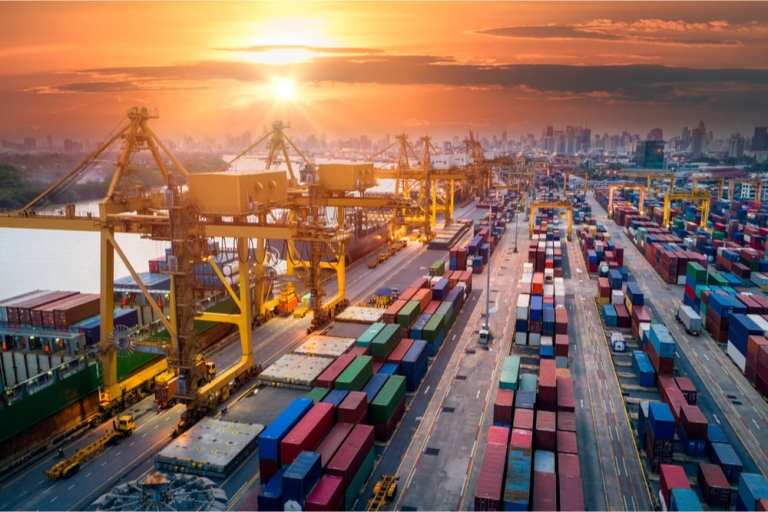
In a black swan event such as the pandemic, ensuring business continues to flow not only means mitigating volatility of today. For many businesses along the global supply chain, it may also mean introducing changes that will affect how trade is done well into the future, too.
In its recent B2B Payments: COVID-19 Impact Report, a collaboration with American Express, PYMNTS digs into some of the most dramatic and immediate shifts within global supply chains as a result of COVID-19. Unsurprisingly, manufacturers in the food and beverage, cleaning supplies, and medical equipment arenas are facing immense pressure from demand spikes, forcing shifts in their supplier bases, redrawn trade routes, and optimized production and logistics operations.
But there could be many long-term consequences of these immediate changes, PYMNTS’s analysis reveals.
“The pandemic is forcing B2B firms to rethink how they work with and pay each other, with at least one major brand deciding to accelerate transfers to its smaller vendors to help them survive the economic downturn,” the report stated. “Companies that can collaborate and adapt will be more likely to stay afloat, retain their business partners and come out of the crisis with tighter customer bonds.”
Shapeshifting Supply Chains
Business model pivots are now the norm, whether through small businesses migrating online or global manufacturers entirely switching product category. With many of these shifts potentially permanent, long-lasting effects on supply chain management strategies are inevitable.
“The pandemic has demonstrated a need to think about supply chains in new ways,” said Brian Reed, vice president of business development and supply chain optimization at global transport and logistics company GEODIS.
Speaking recently with Karen Webster, Chris Caton, senior vice president and head of global strategy and analytics at Prologis, said the combination of shifting business models, changing consumer habits and economic fluctuations, there are likely several years ahead for volatility and long-term changes within global supply chains.
Organizations are likely to shorten their supply chains in favor of “near-shoring” production and manufacturing, enabling firms to cut costs on logistics and transportation as goods are produced more closely to their final destination.
Redefining Risk Strategies
While the physical production and movement of goods through all players within a global supply chain is facing monumental changes, industry experts also anticipate widespread adjustments to organizations’ overall supply chain management strategies.
“Companies cannot simply look at past data to create models on which they can base long-term predictions,” noted GEODIS’s Reed. “They are instead limited to short-term predictions and seeing what they can learn to guide them during future crises.”
The same digitization of retailers and organizations enabling employees to work from home may also bleed into supply chains as more organizations adopt technologies like the Internet of Things (IoT) and machine learning (ML) to track goods and transactions in real time for a more agile flow of product. The data stemming from that technology will continue to be vital to guiding supply chain professionals through the volatility, but industry experts are warning against knee-jerk reactions.
Lois Coatney, partner and president of ISG GovernX, told PYMNTS in a recent interview that one of those reactions may be to lengthen supplier payment terms, a strategy that, while often useful to one’s own cash flow needs, can send negative ramifications all along a supply chain.
While businesses must react quickly, their outlook should continue to be on the long term. For instance, Coatney noted, rather than lengthening payment terms, adhering to contractual obligations to keep production moving is likely to be a more effective strategy at promoting the overall health of all businesses in a supply chain.
“We’re advising our clients to take a step back. Let’s not make rash decisions but work collectively as partners to recognize that clients are struggling, and suppliers are struggling,” she said, adding that organizations should take a long-term stance as they make their next moves. “Now is not the time to withhold payment, now is not the time to enforce credit. Let’s make sure we’re keeping things rolling — and after that, we can determine if there needs to be any sort of payment adjustment.”